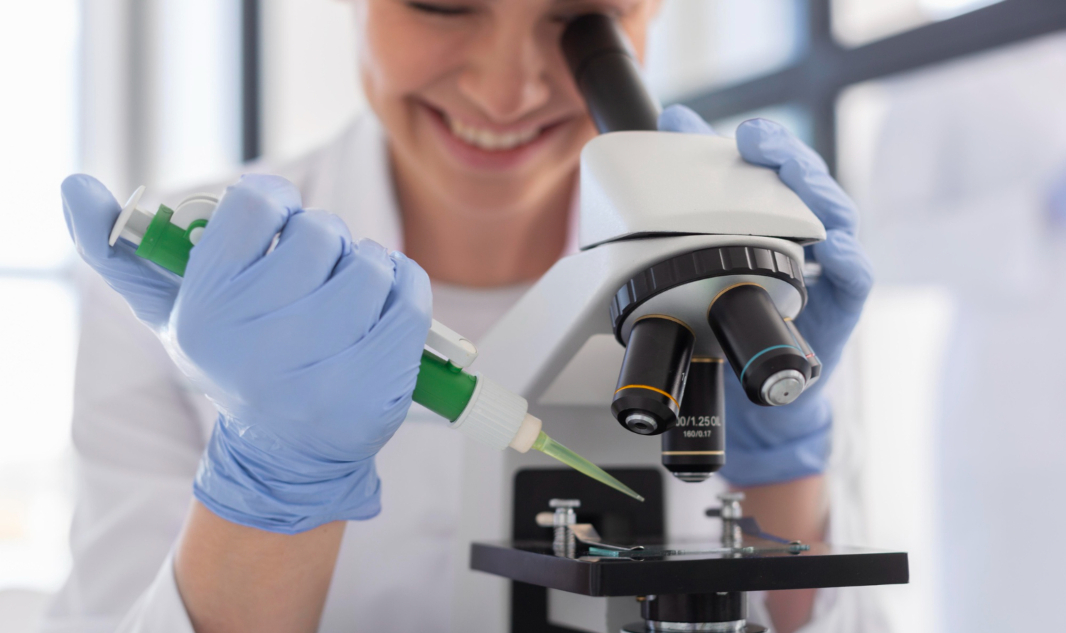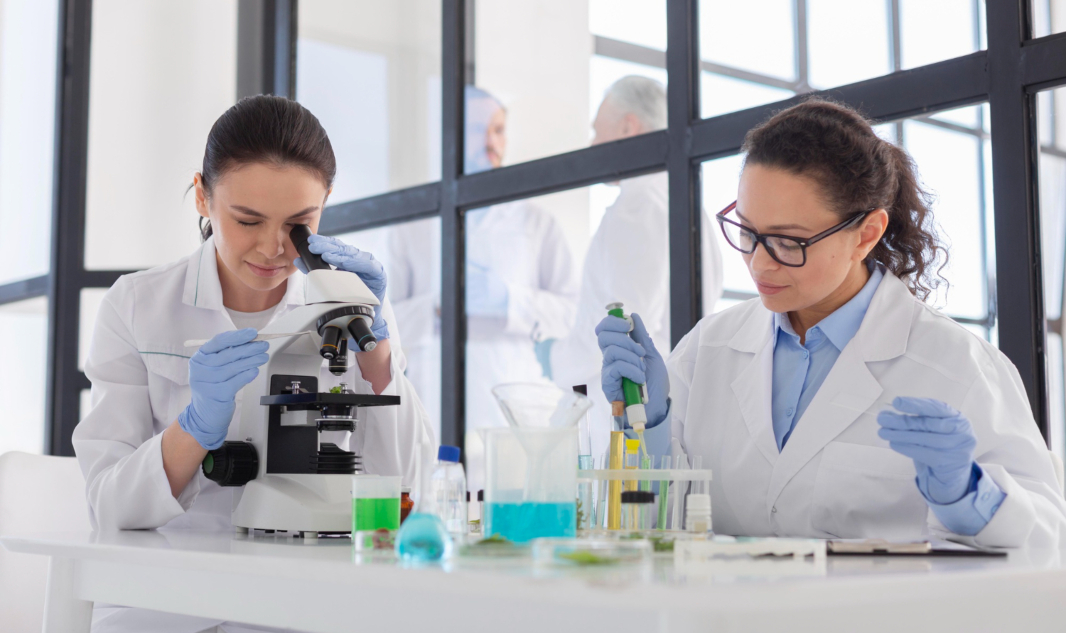Science and technology are key to a more sustainable future – in everything from tackling disease to developing new technologies for clean energy generation.
Laboratories – found in universities, research institutes, hospitals and many companies – are essential to research, analysis and teaching. They often bring together several disciplines and involve different configuration.
However, laboratory buildings, processes and equipment, by their nature, can be resource and energy intensive. Safely carrying out high-quality research can require temperature control, ventilation or high sterility. And the sourcing, manufacture and disposal of specialised laboratory consumables and instruments also have an environmental footprint.
The average lab uses a lot of energy. In fact, it can use somewhere around five times as much energy as a regular office building. Not only does this mean higher bills, such as water, electricity and ventilation, but it also means a higher cost to the environment.
Increasingly, labs are looking for ways to become more sustainable, striving towards a lab that has less of an impact on the environment. With that in mind, just what is a sustainable lab and how do you achieve an eco-friendlier environment?
What is a sustainable lab?
Maximising energy efficiency is no longer just a box-ticking exercise that challenges businesses – it’s becoming a common practice woven into every aspect of what we do. Industries are being set targets when it comes to climate change, including higher education. Meeting emissions targets is now a priority, and sustainable labs must be created in order to minimise their impact.
A sustainable lab is one that is able to reduce consumption, while still maintaining efficient operations. The process of making a laboratory more sustainable should involve at least some of the following key aspects:
- More efficient use of materials
- Improvements to the lab to increase productivity
- Reduction of harmful waste
- Increased recycling and improved usage of products with recycled content
- Increased energy and water conservation
How to make your lab more sustainable
While many laboratories rely on uninterrupted power to devices such as heating and cooling equipment, there are other things you can do to make even a small difference. This can include turning off any equipment that isn’t being used, including office equipment and lighting.
Consider the fume hoods in your lab and keep them closed when not in use, or even consolidate the number of fume hoods needed in the first place. It can also help to clean all equipment regularly, changing any filters and cleaning exposed coils of refrigerators or freezers.
If you haven’t already, then setting up and making clear what the recycling and waste management processes are in your lab can help. You may also want to consider recycling any equipment that is no longer functional or can’t be repaired, and switch to glass instead of plastic for the likes of Petri dishes and other such equipment.

How Evolve can help
A science laboratory differs from other workplaces because you can’t simply switch the lights off at the end of the working day.
Laboratories generally run 24 hours a day, 7 days a week as a number of vital processes can’t easily be shut down. Furthermore, lab equipment usually consumes energy at a higher rate than, say, a regular laptop, while many safety processes require precise, energy-rich waste removal to limit the chance of exposure to hazardous waste.
At Evolve, our professional lab designers consider all of this when contemplating any sustainability renovations. We know that different labs serve different functions and it’s possible that some may find it easier to implement sustainable changes than others.
Often though, there is no quick-fix solution and labs must adapt to keep up with the changing times. Safety is, of course, another major factor. No changes can be implemented without the health and safety implications being considered
However, there are some key benefits to putting in the work and effort to upgrading your lab to a more sustainable design.
The benefits of a sustainable laboratory
Despite the unique requirements for lab work, sustainability development for labs is undoubtedly a good idea. At its most basic form, a sustainable lab saves energy, which saves money, which means a better bottom line for the facility. But the benefits run even deeper.
Think of it this way, if your lab finds a way to minimise the high levels of heat produced by a certain experiment, you may be able to use a smaller air handling unit. This, in turn, could reduce the level of physical space you need, making for a more efficient lab with the ability to handle a higher workload.

Upgrade your scientific workspace with Evolve
It’s not always easy but it’s worth it, check out a few of our tips for implementing your lab sustainability upgrade.
SAFETY FIRST
The main goal of any such project must be to balance sustainability with health and safety. Certain experiments will require materials that may not be reusable or recyclable yet, not ideal but safety comes first.
LAB SECOND, THEN SUSTAINABILITY
Of course, sustainability is hugely important but as we’ve discussed, there’s no one-size-fits-all procedure when it comes to renovations. A synthetic chemistry lab, for example, may struggle to streamline its carbon footprint much (if at all). Aim for your design to have a low carbon footprint and emit low amounts of wastage but be realistic.
Many older labs simply weren’t designed with sustainability in mind and a renovation of the current space may be perfectly possible and have the results you desire but for others still, a whole new lab could be the way to go.
INVOLVE THE WHOLE TEAM
Aim to include as many stakeholders as possible in your sustainability project. Your health and safety specialists should be involved as a matter of course but seek to also include lab users. Engineers and architects will need to understand exactly how the lab will be used in order to make it work for you. The more input you get from other stakeholders, the more successful your reformation will be.
Sustainable lab design is growing more and more essential as each year passes and organisations seek to limit the impact they have on the planet around them and cut budgets. Planning ahead is vital and while the renovation may incur a large financial outlay, you should see yourself making that back in the near future.
If you are considering a sustainable redesign, get in touch with the Evolve experts. For more information about sustainable laboratory design installation, contact us today.
This is who we are
Our programmes and partnerships, innovations and investments, and the positive impact we’re having in our communities
When you succeed, so do we
At Evolve, a love of science is in our DNA. We’re proud to offer our customers an extensive range of quality laboratory and scientific equipment from leading brands as well as exceptional consultancy advice and customer service.
Whatever you’re looking for, we’ll provide a dedicated service that’s designed around you and your project.
Whether we’re building the first EU-GMP pharmaceutical lab in Ghana, developing the first-ever medical cannabis facility in Malta, or equipping the largest police forensics unit in Dubai, we’re there with you every step of the way.
If you’d like to speak to one of our experts on how Evolve can help your next science-led project, please get in touch with us today.


